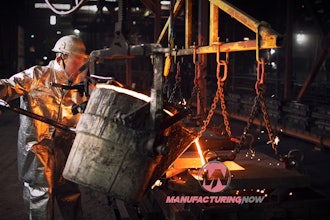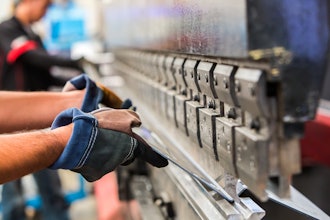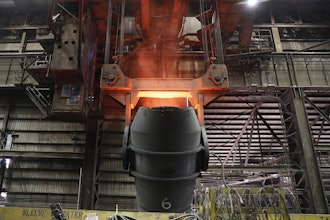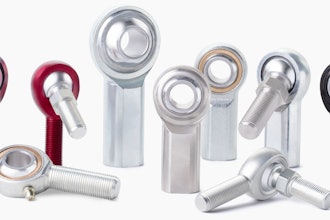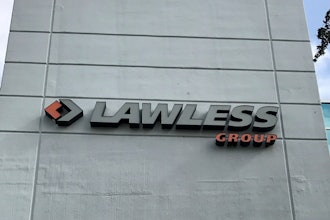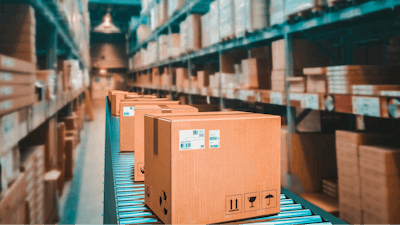
As global supply chains have grown, so have the opportunities for waste within warehouses. Identifying these issues and reducing their impact is critical to the ongoing success of warehouse operations.
Focusing on sustainability can improve warehouse operations in several ways, such as improved processes and a positive impact on brand reputation. A report by Deloitte found that 32% of UK consumers want to be more sustainable, so it can only be beneficial for warehouses to implement these changes.
Many warehouse operators are pledging to make their operations more sustainable to curb their carbon footprint and make more efficient choices when it comes to supplies. But some are unsure about where to start.
Implementing lean manufacturing may be the answer to being sustainable and profitable simultaneously.
What is lean manufacturing?
Toyota developed the concept of 'lean' to streamline manufacturing processes, outlined in The Toyota Production System (TPS). The concept has since been adopted for efficient operations worldwide to eliminate waste without impacting productivity.
The main aim of lean manufacturing is to reduce timescales within the production system and the response times from suppliers and customers. Implementing lean manufacturing can increase profit and be an effective way for warehouses to become more sustainable.
There are seven wastes of lean manufacturing operators should keep in mind to assess waste and usage in every warehouse process, all of which can move operations towards sustainability.
Transport
Transportation is essential to any successful supply chain, but an excessive amount can increase costs, downtime and product damage. Reasons for large volumes of transport waste include poor warehouse layouts, unnecessary steps in the process and poorly-designed systems.
Inventory
Many warehouses face issues with excess inventory, usually when a business has products that haven't sold due to inaccurate forecasting or overbuying. These products typically get thrown away, leading to a loss of revenue and a negative impact on the environment.
Motion
Like transportation, motion refers to unnecessary movements within the warehouse but focuses mainly on the motion of employees and equipment. Examples of motion waste include the time spent searching for tools to complete a task or machines travelling unnecessarily across the warehouse floor.
In this example, poor warehouse layout is a significant factor, but motion waste can also be caused by isolated and siloed operations and poor process design and controls.
Waiting
Unbalanced workloads, unplanned downtime, poor processes and lack of cross-team communication are factors in the waste created by waiting.
Waiting wastage could include waiting for a piece of machinery to be repaired after breaking down, staff doing unnecessary tasks or working particularly slowly.
While not directly linked to the environment, a reduction in time wasted can lead to faster processes and a reduction in labour costs, both of which play a part in making warehouses more efficient and therefore more sustainable.
Overproduction
When businesses overproduce the inventory necessary to meet demand, this can lead to vast quantities of waste that will hurt revenue and the environment. Not understanding customer needs, changes in engineering processes and large setup times can lead to this type of waste.
Overprocessing
It can be easy for warehouses to engage in overprocessing. A lack of cross-team communication, internal training and automated integrations can lead to unnecessary tasks such as adjusting components after installation and over-engineering products.
Defects
Defects can be the most considerable wastage within the supply chain and refer not only to defective products but also errors in the information provided. Any defects cost time and money to fix.
Lean manufacturing methods
Kaizen
There are several methods to implement lean management within a warehouse. The most popular is the Kaizen method, taking its name from the Japanese term for 'improvement'. Kaizen is a culture-focused initiative undertaken by a group of employees focusing on continuously improving their working environment.
For Kaizen to be effective, everyone in the business must work together to identify areas where processes can be improved or removed to proactively achieve sustainability.
5S Methodology
One of the other most popular methodologies is the 5S method. The 5S stands for five steps: sort, set in order, shine, standardise and sustain.
These steps should be followed in this particular order and involve:
- Going through items in a workspace
- Removing what is unnecessary
- Organizing items
- Cleaning
- Performing maintenance
- Making sure these ways of working are sustained
Following these steps precisely in this order should lead to a quick reduction in waste that will ultimately improve the sustainability of a warehouse.
With lean manufacturing in mind, warehouse managers and their workforce can assess processes and put the thinking and actions in place. Not only will this fine-tune operations, but it will also ultimately move them towards a more sustainable operation.
Danielle Whittaker is a Marketing Executive at Toyota Material Handling UK.










